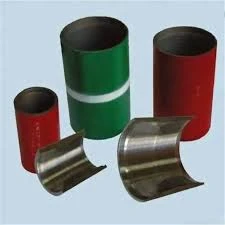- Afrikaans
- Albanian
- Amharic
- Arabic
- Armenian
- Azerbaijani
- Basque
- Belarusian
- Bengali
- Bosnian
- Bulgarian
- Catalan
- Cebuano
- Corsican
- Croatian
- Czech
- Danish
- Dutch
- English
- Esperanto
- Estonian
- Finnish
- French
- Frisian
- Galician
- Georgian
- German
- Greek
- Gujarati
- Haitian Creole
- hausa
- hawaiian
- Hebrew
- Hindi
- Miao
- Hungarian
- Icelandic
- igbo
- Indonesian
- irish
- Italian
- Japanese
- Javanese
- Kannada
- kazakh
- Khmer
- Rwandese
- Korean
- Kurdish
- Kyrgyz
- Lao
- Latin
- Latvian
- Lithuanian
- Luxembourgish
- Macedonian
- Malgashi
- Malay
- Malayalam
- Maltese
- Maori
- Marathi
- Mongolian
- Myanmar
- Nepali
- Norwegian
- Norwegian
- Occitan
- Pashto
- Persian
- Polish
- Portuguese
- Punjabi
- Romanian
- Russian
- Samoan
- Scottish Gaelic
- Serbian
- Sesotho
- Shona
- Sindhi
- Sinhala
- Slovak
- Slovenian
- Somali
- Spanish
- Sundanese
- Swahili
- Swedish
- Tagalog
- Tajik
- Tamil
- Tatar
- Telugu
- Thai
- Turkish
- Turkmen
- Ukrainian
- Urdu
- Uighur
- Uzbek
- Vietnamese
- Welsh
- Bantu
- Yiddish
- Yoruba
- Zulu
2-inch Steel Coupling for Effective Pipeline Connections in Industrial Applications
Understanding 2-Inch Steel Couplings Importance and Applications
In the world of plumbing, construction, and mechanical systems, couplings play a vital role in connecting pipes or tubing. One specific type of coupling that stands out for its durability and reliability is the 2-inch steel coupling. These couplings are essential components used in various industries, from oil and gas to residential plumbing, providing seamless connections that ensure the integrity and performance of the piping systems.
What is a 2-Inch Steel Coupling?
A 2-inch steel coupling is a type of fitting that connects two sections of piping with a 2-inch diameter. It is typically made of steel, which offers high strength and resistance to corrosion, making it suitable for a wide range of applications. The steel is often treated or coated to further enhance its durability against harsh environmental conditions. Couplings can be categorized into different types, including threaded, slip-on, and welded couplings, each serving unique application requirements.
Importance of Steel Couplings
The importance of 2-inch steel couplings lies primarily in their ability to connect piping systems securely and effectively. Steel is known for its robustness, which is crucial in high-pressure scenarios, such as in oil and gas pipelines, or in heating and cooling systems where fluctuations in temperature can be common. The use of a steel coupling ensures that these systems maintain their integrity under considerable stress, thereby preventing leaks and potential system failures.
Moreover, steel couplings can withstand corrosive environments, making them ideal for outdoor applications or those exposed to chemicals. When using plastic or lesser-quality materials, the risk of wear and tear is significantly higher, leading to increased maintenance costs and operational downtime.
Applications of 2-Inch Steel Couplings
The applications of 2-inch steel couplings are vast and varied
1. Plumbing Systems In residential and commercial plumbing, these couplings facilitate the connection of water supply lines, waste drainage, and sewer systems. Their strength ensures that the connections do not fail under pressure, providing peace of mind for property owners.
2 inch steel coupling

2. Industrial Pipelines Steel couplings are prevalent in industrial settings where fluid transport is essential. They can be found in the oil and gas industries, chemical processing plants, and mining operations, connecting pipes that transport crude oil, natural gas, or hazardous materials safely.
3. HVAC Systems In heating, ventilation, and air conditioning (HVAC) systems, steel couplings connect ductwork and piping used for refrigerant. Their ability to withstand pressure and temperature changes makes them ideal for optimizing air circulation and maintaining indoor climates.
4. Fire Protection Systems Many fire protection systems rely on steel couplings for their water supply lines. Given the crucial role of these systems in safeguarding lives and property, the reliability of steel connections is paramount.
5. Construction In the construction sector, steel couplings are often used in structural applications to join sections of piping that support various systems within buildings.
Installation and Maintenance
Installing a 2-inch steel coupling requires precision to ensure a secure fit. This can involve welding or the use of special tools for threaded couplings. It is essential to follow industry standards and safety protocols during installation to mitigate risks.
Regular maintenance can further prolong the life of steel couplings. Inspecting for signs of wear, corrosion, or leaks can help identify potential issues before they escalate. In corrosive environments, applying protective coatings can also enhance the lifespan of couplings.
Conclusion
In conclusion, 2-inch steel couplings are indispensable components that ensure the safe and efficient operation of various piping systems across multiple industries. Their strength, durability, and resistance to environmental challenges make them a preferred choice for professionals. Understanding their importance and applications can help in making informed decisions regarding the installation and maintenance of piping systems, ultimately contributing to the overall success of projects in plumbing, industrial, and construction fields.
-
Well Casing Extension Couplings – Applications and InstallationNewsJun.06,2025
-
Types of Crossover Subs in Drilling & CompletionNewsJun.06,2025
-
Key Features of High-Quality Tubing Pup JointsNewsJun.06,2025
-
Installation and Maintenance Tips for Steel Couplings for PipeNewsJun.06,2025
-
How to Select the Right Pup Joint for Oil & Gas OperationsNewsJun.06,2025
-
Applications of Stainless Steel Pipe CouplingsNewsJun.06,2025







